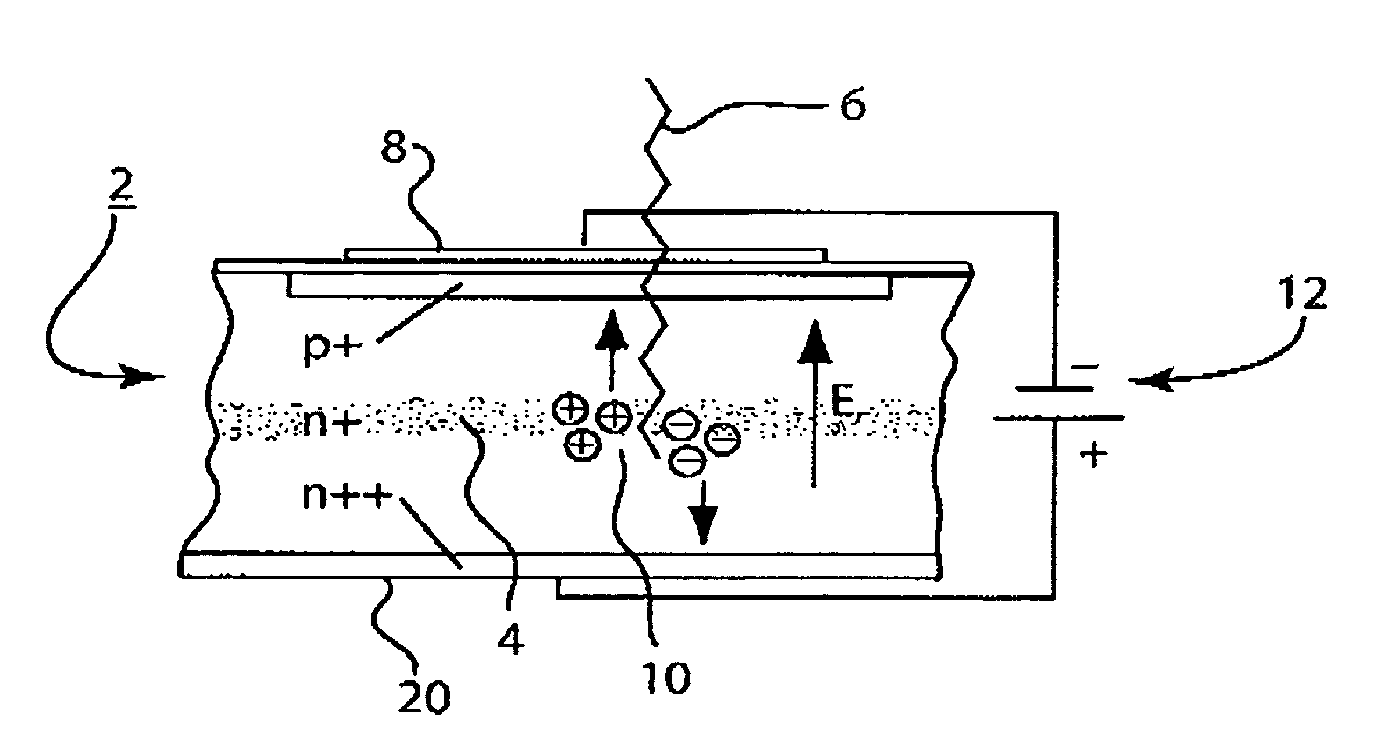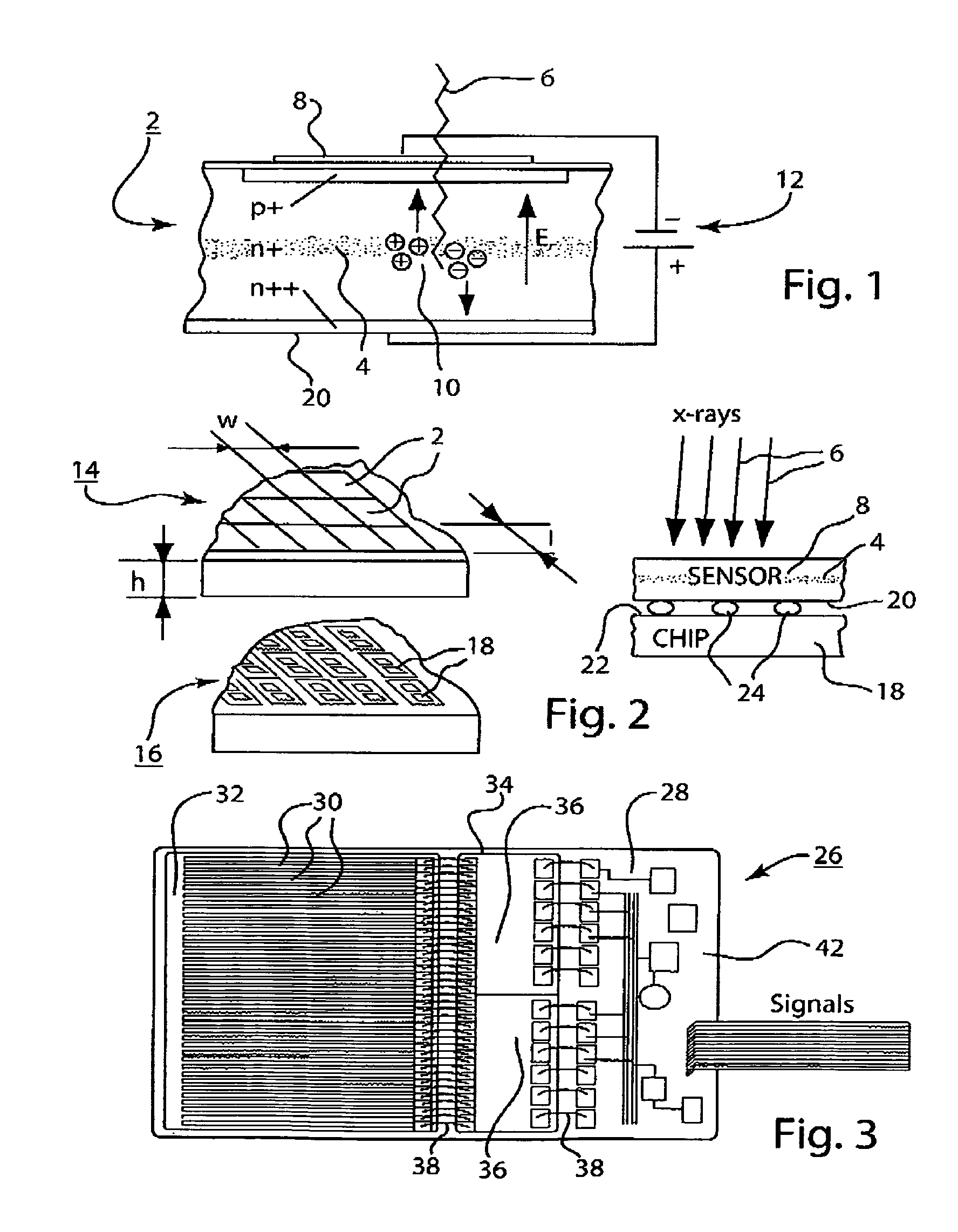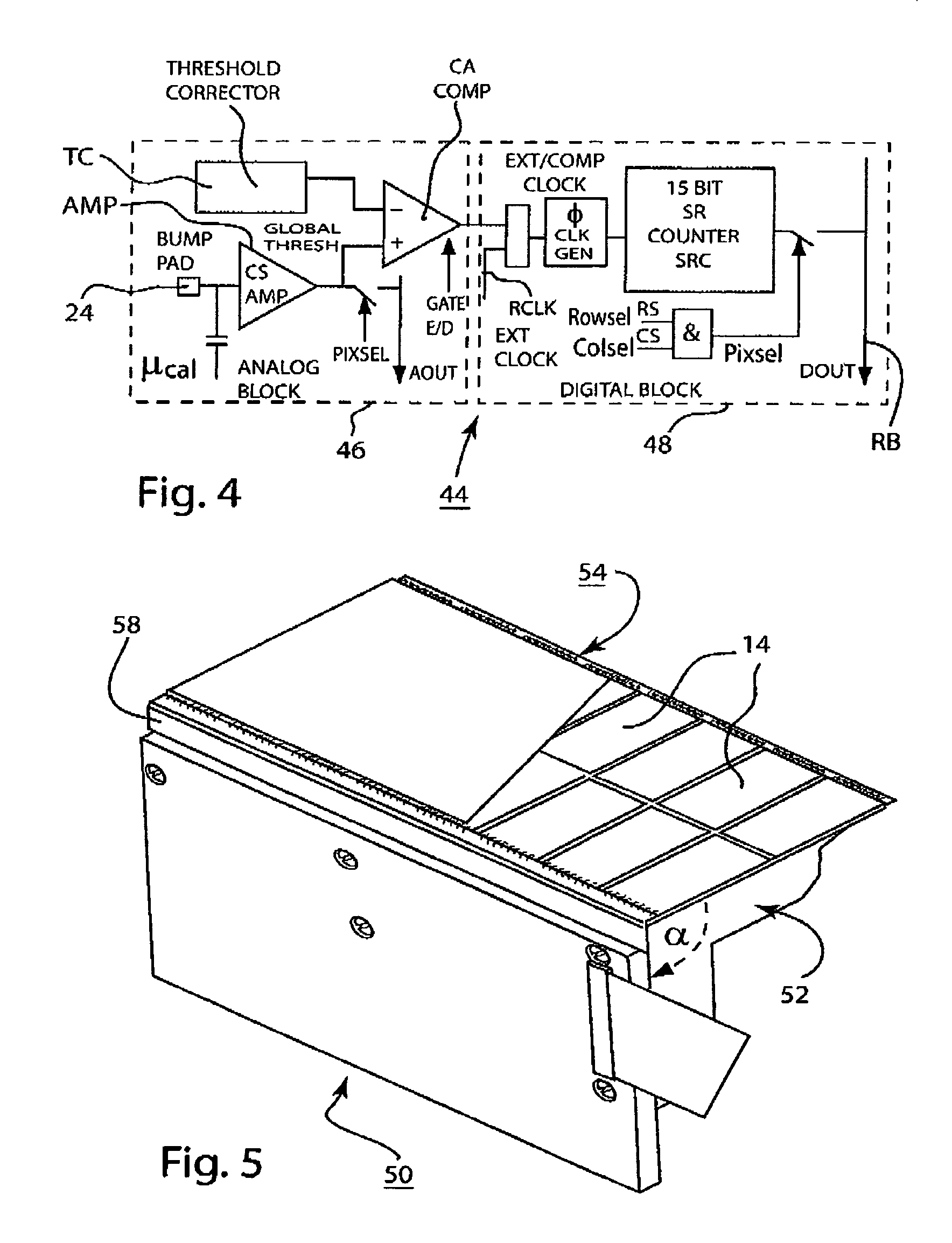Photon counting imaging device
a technology of imaging device and photon, which is applied in the direction of x-ray photon detection device, x-ray/gamma/cosmic radiation measurement, instruments, etc., can solve the problems of inability to use high-dynamic investigation devices for x-ray photon detection, insufficient time resolution, and limited electronic circuitry, so as to facilitate observation even very fast changes and sufficient time resolution
- Summary
- Abstract
- Description
- Claims
- Application Information
AI Technical Summary
Benefits of technology
Problems solved by technology
Method used
Image
Examples
Embodiment Construction
[0084]FIG. 1 illustrates schematically the architecture of a photodetector diode 2 having a doped semiconductor p+, n+, n++ trespassing section 4. The material chosen for the photodetector diode 2 depends on the desired bandgap energy required to generate an electron hole pair by the photo-effect. Suitable materials are undoped amorphous silicon having band gap of 1.12 eV and a bundle of IV-IV compounds and III-V compounds (indium and gallium salts, like gallium arsenide or indium antimonide).
[0085]An incident photon 6 having an energy in the range of several KeV before entering the doped semiconductor p+, n+, n++ trespassing section 4 passes through an aluminum cover layer 8 and causes according to its energy and to the energy gap of the doped semiconductor p+, n+, n++ trespassing section 4 a respective number of electron hole pairs 10 under x-ray annihilation. In the drawings, this number of electron hole pairs is exemplarily shown by one electron-hole pair 10 being divided by the...
PUM
 Login to View More
Login to View More Abstract
Description
Claims
Application Information
 Login to View More
Login to View More - R&D
- Intellectual Property
- Life Sciences
- Materials
- Tech Scout
- Unparalleled Data Quality
- Higher Quality Content
- 60% Fewer Hallucinations
Browse by: Latest US Patents, China's latest patents, Technical Efficacy Thesaurus, Application Domain, Technology Topic, Popular Technical Reports.
© 2025 PatSnap. All rights reserved.Legal|Privacy policy|Modern Slavery Act Transparency Statement|Sitemap|About US| Contact US: help@patsnap.com



